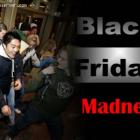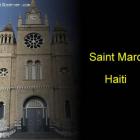ADVERTISEMENT
Voodoo
Pictures taken from Haiti Voodoo related issues. Haiti is internationally known for its voodoo religion which is part of its culture. We show ceremonies, practices, believe,. the phenomenon of zonbification and more
How Haitians see Lwa Papa Ghede?
A prolific figure in what some would call Haitian mythology, Lwa Papa Ghede signifies both death, in his form as Baron Samedi, and eroticism in his general form. What he is, is the spirit through which one crosses into the afterlife. He is said to control its access and is, therefore, cloaked in black.
If one wishes to have communion with the dead, Ghede would be whom one would need to seek contact with as he is the keeper of the cemetery as well as the only source to the dead. This is not to be confused with Legba who must be contacted to cross into the spirit world. More exotically, Ghede is responsible for the world's eroticism. He is not titillated by it, nor ashamed of it, it is merely a part of existence to him. He is said to hold the more puritanical (especially whites) hostage to their sexual desires as a means of drawing them away from their modesty, a feat which greatly amuses him. He accomplishes this by "mounting" the unsuspecting.
Zomby, a Pharmacological Phenomenon Clairvius Narcisse
The Haitian belief system of Voodoo is an inherent part of Haiti's cultural ethos. It co-exists alongside the dominant religion of the island, Catholicism, and has even adopted some of its practices. Traditionally, Voodoo has relied on animal sacrifice and percussion-driven dancing to induce deep trance states in order to receive the Lwa.
A peripheral phenomenon of Voodoo is the belief in Zombies, the living dead. To illustrate how a Zombie is created, Clairvius Narcisse is a prime example of how zombies originated as a cultural force in Haiti.
Clairvius Narcisse had been taken for dead around 1960. But unbeknownst to his family, a Voodoo priest had transformed Narcisse into a Zombie with the help of potent drugs. The priest exhumed Narcisse's body and in addition to Tetrodotoxin, which put Narcisse into a death-like state, the priest injected Clairvius Narcisse with Jimson weed, a powerful hallucinogen. This impaired Narcisse's brain function. He became a victim of forced labor until the priest died. Regaining his cognitive abilities, he drifted off, returning to his birth place to recount his agonizing experience.
Ezili Freda in Haitian Voodoo Religion
Standing as the rival of the ever fierce mother figure of Ezili Dantor is not an easy place to be, but the beautiful and magical Ezili Freda seems no worse for the position. This Haitian Lwa, known fully as Metres Mambo Ezili Freda Daome, is a love goddess, associated with romance, luck in gambling, luxury, refinement, cleanliness and abundance.
Seen as the mistress figure, rather than as a wife, she is always depicted as a fair, white woman wearing three gold rings for each of her Lwa husbands, Danbala, Ogoun Feray and Met Agwe Tawoyo. Haitians flock to leave offerings of cakes, soap, gold jewelry, basil and perfume to the Lwa's most material girl, in hopes she will grant them the quick success in pecuniary matters she is known for.
Ezili Dantor in Haitian Voodoo
The idea of a perfect mother is encapsulated in the essence of the Haitian Vodou Lwa, Ezili Dantor. Known affectionately as Mama Danto, the god is probably the country's most revered deity, as well as a model for the role of matriarch in the culture.
From the family Erzulie among the spirits (Lwa) of Haitian Vodou, Ezili Dantor is looked upon as the spirit of not just motherhood, but single motherhood as well. Seen in most representations as the Black Madonna of Częstochowa, an image believed to have been brought to the country in the early 1800's by the Polish soldiers who had come to fight for France in the revolutionary war, she is considered to be a fierce protector of children, and is the subject of many art forms including the visual, lyrical and musical.
Simbi in Haitian Voodoo, Between the Living and the Dead
Simbi, the Haitian Voodoo Snake God is a god for the modern world, shedding its skin from the past and unveiling a new and improved, digital persona that allows it to communicate through the Internet.
In earlier, less advanced iterations, the Voodoo Lwa, or god, was a sorcerer of great skill, giving service to the secret societies of Sanpwel. It has also been known in Voodoo as Mercury, the messenger of the sun, Legba. In its capacity as such, Simbi acts as the conduit for creativity and also the carrier of souls from place to place.
The Simbi is a serpent that traverses the land of the living as well as the dead. Its more terrestrial counterparts grace from the many and varied snake family of the Loa, found in the Kongo region of West Central Africa. Traditionally associated with water, shown in the names of two types of Loa, the Simbi Dlo or Simbi of the Water, and the Simbi Makaya or Simbi of two waters, the Voodoo culture has ascribed a variety of associations with the serpent, one, Simbi LaFlambeau, even being associated with fire.
Voodooists' Confederation Ask for Social Inclusion
Since the legalization of Voodoo as an authentic faith in 2003, they have grown in political stature. Recently the National Confederation of Haitian Voodoo Practitioners (NCHVP) met with Prime Minister Lamothe to discuss inclusion in the social institutions of the country.
They argued against any policies proposed by conventional religious and women's groups keeping NCHVP from enjoying the rights of other civil society groups. Voodoo High Priestess, Envonie Auguste, stated Haiti's Founding Fathers' ideals included freedom and unity of Haitians, without prejudice of skin color differences, gender, sexual orientation, or religion. She invited the civil society sector to begin a dialogue to right the wrongs inflicted on Voodoo believers, so they may acquire social inclusion in civil institutions.
The History of Voodoo
Voodoo is more correctly pronounced as "Voudon". It is an Afro-Caribbean religion originated in Haiti. Voodoo teaches belief in an unknown, uninvolved, supreme creator god called "Bondye" (good god). The believers of Voodoo worship many 'loa' or spirits. Each of these spirits or loa has own domain that represents specific parts of life. A farmer praises and offers to the spirit of agriculture; Erzulie Freda is the spirit of love. Loa are the intermediaries between humanity and Bondye-- the Creator who lives far from the world.
A Haitian professor, Leslie Desmangles who teaches at Hartford's Trinity College has written a book related to these practices named "The Encyclopedia of the Paranormal". He has said that "voudon" in Haiti refers to an assortment of many cultural elements that include folk medical practices, cult of ancestors, many traditional system of ethics, stories, songs, proverbs, folklores, personal beliefs and practices. It is more than a religion or belief; it is a way of life. The followers of this practice can be found in the Dominican Republic, Jamaica, United States, Brazil and elsewhere.
Ghede Celebration - Best Music Videos
November 2nd, is a special day in the Haitian culture. In Haiti as well as in the Diaspora, many Haitians use this time to celebrate Ghede with dances and Voodoo ceremonies.
In Voodoo mythology, Guédés represent the spirits of death and resurrection, symbolized by the Lwa "Baron". Whether you are celebrating Baron Samedi, Baron Cemetery or Baron Lacroix, I have selected the following videos for you to enjoy:
gede - Artist: Rara Fanm
PAPA GHEDE
Ghede Yanvalou
Ghede, Doesn't the "Pimen" burn after the Lwa is Gone?
Like 99% of Haitians, I believe in the Haitian Voodoo. I have observed people being possessed by Lwas. On this November 2, this is high time for Ghede tradition where the "Randed-Vous" is at various Cemeteries around the country.
Baron Samedi will be everywhere, dancing, drinking and performing a variety of acts that would only be allowed on this day of Ghede.
One thing that I am always puzzled about during Ghede is the phenomenon of washing oneself with Hot Pepper, In Haitian Creole, "Pimen". Usually, the people who are possessed by "Papa Ghede" or "Baron Samedi" make sure that the Hot pepper is inserted in their sexual organ.
Ghede, Haitian Lwa That Embody Powers of Death & Fertility
The Ghede (often spelled as Gede or Guédé) Lwa families in Haiti practice powers of life, death and fertility through Haitian Vodou. They serve as the intermediaries between the creator god or the good god (Bon Dieu or Bondye) and humanity.
Ghede means 'the sacred dead'. "Lwa" often referred as 'Mystères and the Invisibles'-- are the spirits of Haitian Vodou. Fete Ghede or Gede Festival is a past-honoring event also known as the 'Festival of the Ancestors' performed on Second November every year in the honor of the 'Lord of the Dead'. It is the day to repay the boons granted by Ghede otherwise they will take revenge on you. During the ceremonies of Fete Ghede, there is always a spiritual procession to the cemetery. The women spiritual adepts are called 'mambos' and their male counterparts are known as 'houngans'. They join drummers and singers at the festivals and pray at a cross rising from a tomb; summon the spirits before the party begins.
Our objective is to share with you news and information about Haiti and the people of Haiti. Traditions, habits and the way we were or grew are alive in this site. We highly recommend that you Subscribe to our Newsletter and also share with us some of the things that are memorable and made us unique people.

 Haiti tech Summit
Haiti tech Summit  Black Friday Shopping Season
Black Friday Shopping Season  Life After Death
Life After Death  Saint Marc, Haiti
Saint Marc, Haiti  Marmelade, Haiti
Marmelade, Haiti